At Defence and Security Equipment International (DSEI), AERALIS unveiled the designs for the first variants of their revolutionary modular light jet aircraft including its Advanced Jet Trainer which will be the first design to go into production.
This next-generation design of the Common Core Fuselage (CCF) will be the backbone of the company’s future aircraft fleet.
“From the start, AERALIS’s modular principles have been central to the design of the aircraft. This guiding principle has resulted in a revolutionary design, made to operate across a number of different markets. Following AERALIS’s recent design review, chaired by Sir Julian Young, the new light jet aircraft will have a first-of-its-kind wing architecture consisting of an inner wing and an outer wing to ensure manoeuvrability at both low and high speeds – giving the aircraft transonic capability.
Flexibility is also at the core of the new aircraft design allowing for multiple configurations including Advanced Jet Trainer, Aggressor, Companion, ISTAR, and Tanking options. Each of these aircrafts will be based on the CCF, to allow customers to acquire additional modules to change the use of the platform.”
This new aircraft will feature a sleeker design, providing room for additional fuel supply alongside electronic capabilities to increase the aircraft’s resilience and maintainability whilst providing overall performance gains.
Changes to the aircraft fuselage design and new wings will remove the need for bespoke landing gear seen in the previous iteration. This development means the aircraft will use commercial off-the-shelf landing gear which increases maintainability, further reducing the aircrafts’ maintenance costs.
AERALIS’s founder & CEO Tristan Crawford commented:
“I am incredibly proud of the work the AERALIS team has done to develop this cutting-edge design which represents a significant offering in the military light jet market. The modular design provides the AERALIS jet with maximum flexibility whilst including a first-of-a-kind design to enhance aircraft performance. I look forward to quickly progressing the aircraft to its next stage.”


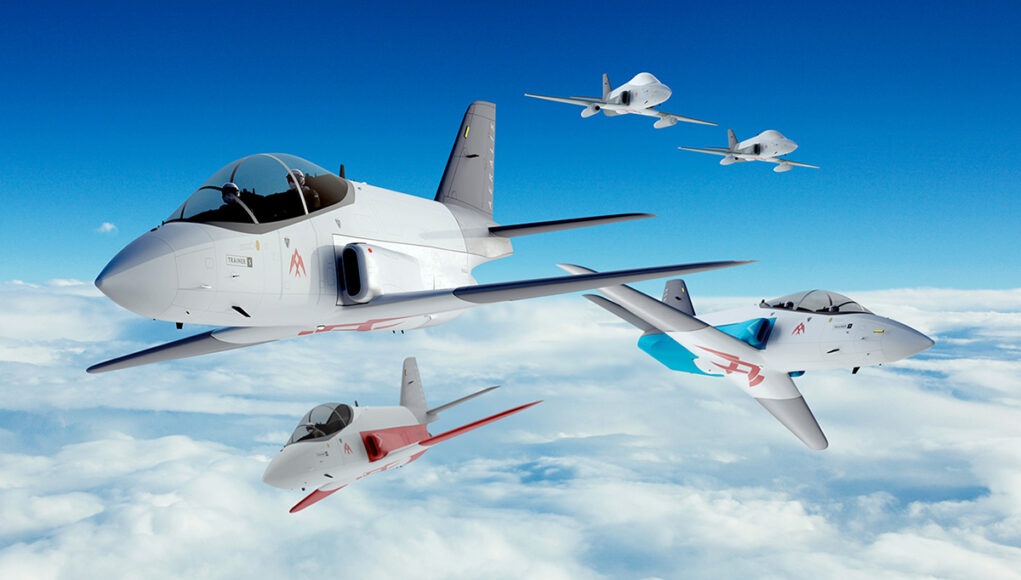
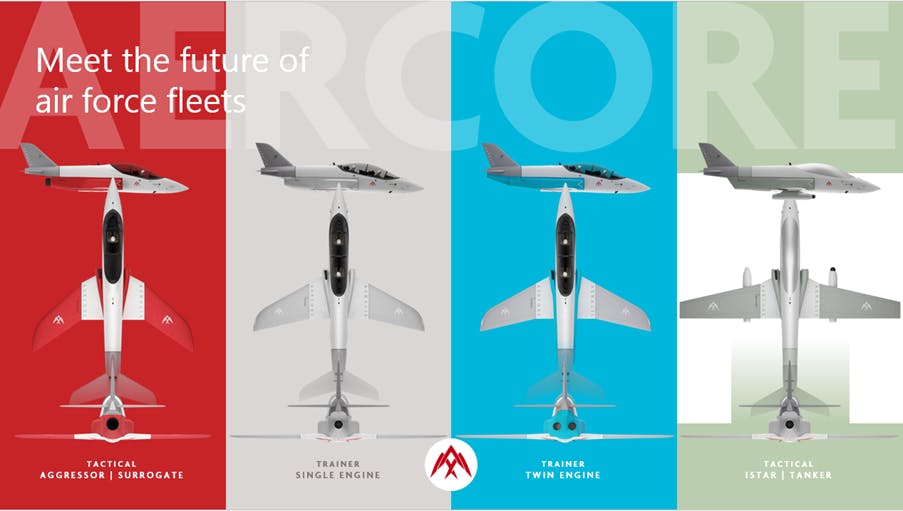

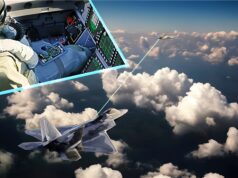
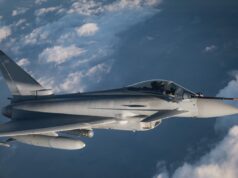
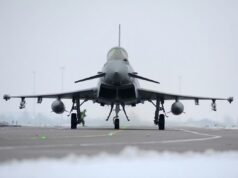
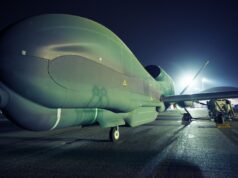

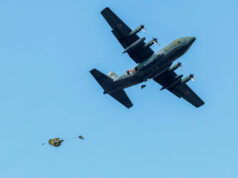


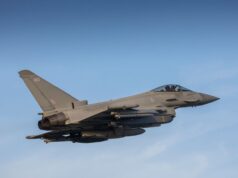

How long I wonder to get AERALIS into production and into service .Has we know our Training of pilots is in a mess RAF pilots going over seas for Basic Training really 🙄
Aeralis announced in 2021 the aim for first flight in late 2024. Discussing the latest redesign, the CEO hoped for a first flight within 3 years with market entry before the end of the decade.
Not exactly rapid compared with the Saab/ Boeing T7.
Yeah, I think they have struggled to get skills domestically also. Our aircraft design industry isn’t what it was 70 years ago where we knocked out say 6 designs a year.
I don’t think anyone’s industry is knocking out designs that rapidly anymore. Its a different world nowadays
Scaled Composites in the US has a steady churn of new designs many getting to prototype or production. Some of the newer players in the AAM and UAV space are also very active with new airframes. Turkey is also knocking out some new designs and getting the them into production. But Europe in general is not moving much beyond CGI concepts.
Trouble is Britain hasn’t d designed a plane in a generation, even Bae are struggling to re establish the overall skills base required esp beyond core expertise so going to be tough for others to progress quickly. Probably should have committed to lesser drone development like the Turks but probably thought that was beneath us or not fit for a Country of our standing. Recent events are changing that no doubt.
T7 not really something to be held up as an example of competent development. Prototype first flew in Dec 2016 10 days before their bid was submitted, contract was won in 2018 and it entered production in 2021 with first serial production version rolled off the assembly line in April 2022 however major design issues encountered and redesign required such that first one isnt now expected to be accepted until Feb 2025! Issues include the ejection seat will likely kill you unless your overweight, at 25 degree angle of attack you get wing flutter, and despite being a digital design Boeing has been unable to produce a list of required spare parts so the Air Force has been unable to order spares and their having to cannibalise four other aircraft to keep one flying. And thats even putting aside the testing difficulties with Air Force having to give hundreds of millions in extra funding for flight tests because Boeing was refusing to pay for them (for example each ejection seat test costs $11m) because they have differing contractual interpretations of whether matching a contract specification value is the same as ‘exceeding’ it.
That will be part of the reason Boeing put in cheap bids for contracts. They then need extra money to actually do what they were meant to.
Boeing reputation is really in the gutter and will take some hard work to get out of it. If it can actually get out of the gutter before running out of money.
If it were a British Company I suspect ti5 would have gone into receivership. Boeing not only gets much if it’s Business because of political influence and friends in high places, but it gets much of the extra it needs to sustain those projects when they are late and below expectations. It will be interesting to see if it gets any more for Starliner on which it is losing billions and the more it produces the more it loses, if DreamChaser has a successful first flight turn of the year which was cheated out of Govt support by the likes of Boeing it will be under even more pressure.
The difference is that there is actually an aircraft which went from concept to prototype very quickly. The fact that unexpected problems have been encountered once production started isn’t unusual. The F 35 is still needing fixes 22 years after LM won the JSF competition.
I really hope Aeralis can deliver what looks like an ingenious design. But the more time that passes without anything tangible produced except mock ups, the more doubts arise.
The project has now been running for 8 years and they don’t seem to be any closer now than then. I remember when somebody on here did some homework on them and their head office was a semi-detached in Godalming.
Boeing seems will not be even making money from it.
I think the point of the article is to show that they’re significantly further on. They haven’t decided to change the shape without significant amounts of research. Work is progressing well…
Actually they have been promising it since about 2012. They have no proper designs and no factory, only a rented office and some glossy pictures. They are not an aircraft designer and manufacturer, they are just a marketing company. It beggars belief that they have got away with this so far.
They have been given some development funding by the rapid capabilites office, and also a contract to use thier design software on GCAP / Tempest, so clearly interest in them. The design was revamped due to customer feedback, espiecially for the ‘red air’ role. so maybe we will see hem as longer term replacement for Hawk and maybe T6 Texan over time.
It’s all smoke and mirrors. I think that the RCA has now started ho realise that. Aeralis has never designed an aircraft and have no manufacturing capability, only a rented office in Bristol. There is zero chance of this becoming a replacement for Hawk.
I never understood how a Modular aircraft could work. It’s hard enough making one aircraft safe to fly. Add a weapon on it and certification starts all over again.
Now taking the wings on and off, engines on and off is really going to complicate things as it’s basically a different aircraft.
Perhaps they know something to crack the complicated nut that I can’t figure out. Perhaps not.
I agree there is no chance of this getting into the air. They really don’t know anything. They have no engineers and no designers. I could not believe people really believed this when I met them and they have done nothing since. Ets just remember, it’s a paper company with no reality. No history, no designers, no engineers, no factory, no real designs no engineering drawings absolutely nothing. In ten years they have produced some artwork. And one basic model for a wind tunnel. This is beyond a joke.
This shows a lack of understanding. Quite a lot of engineering analysis has gone into this design- it’s far from just “artwork”
Well I have seen some great engineering analysis by BAe at Wharton and Salmesbury and in submarines in Barrow. Aeralis were unable to show anything comparable. They have just produced some simple concept designs and one basic model. They could not answer even basic questions about how thier concept of a modular aircraft would work in reality. I spent 25 years working with companies that produced aircraft, submarines, weapon systems, radars, sonar, small arms and many others. The only company I ever met that had no real substance but kept promising the earth was Aeralis. I rather think that there has been virtually no analysis whatsoever but they have spent inordinate amounts of time in marketing and in creating a “show” which they take on the road and impress people with.
I maybe wrong Adam and to be honest I hope I am it would be great to see such a concept fly.
I’m afraid you’re quite mistaken regarding “virtually no analysis whatsoever”. Just the CFD team at my company has completed a significant amount of analysis work over the last two years for many different scenarios and geometries….and this is just one part of the aerodynamics side. AERALIS is working with many other teams to pull a complete analysis of the airframe together.
very interesting that there is a tanker option. could that be for the carriers???
This is the way to go. Wonder just how cheap they will be, and if they will be cheap enough to be “drones” per-se, or even a ready made “loyal wingman”?
AA
They would need to make the common fuselage stealth imo for it to be tangible offering for loyal wingman.
“Each of these aircrafts will be based on the CCF”
I knew things were getting bad with manpower levels…….:)
Maybe not the most fortunate of acronyms.
👍
Great Idea but yet again it’s a “concept” and based on computer modelling. When are we going to see an aircraft fly? What happens if it displays problems that the algorithms and AI haven’t spotted? This week’s Defence Committee Report criticising the lack of “mass” in terms of numbers makes a cost effective, flexible design essential for the future but the slow progress must be a concern!
The designs arising from CAD design and Computational Fluid Dynamics will then be built into scale models and flown in wind tunnels just like the old days. However the computer testing will have ironed out many of the issues already. I assume as long as they have the ability to manufacture this thing then it could well be quick to flight testing.
As I have said elsewhere on these posts, there is no manufacturing capability whatsoever, just a rented office. They don’t have the ability to make a paper clip let alone an aircraft.
Textron Scorpion anyone?
Textron Scorpion is not as flexible though and has already been ejected out of the US Light Attack competition in favour of two turbo props… The benefit of the Aeralis is that it can easily be made in various configurations which makes it far more sellable to other nations.
That seems an idea that will complexify the aircraft. Will make its structure heavier.
I’m guessing the thinking is that, instead of A) buying a trainer and a light attack aircraft or B) using a trainer as a light attack aircraft or vice versa, you can instead buy one of these and switch out parts for the mission.
We’ll see if this idea works out as cost effective though. I wonder if the modular core airframe can handle the stress of being hot bunked.
Looking like a bit like a Hawk now after a bit of nip and tuck… Wonder if the Red Arrows would be interested? I personally liked the earlier mid wing design which was a bit more Gnat like but it’s good that’s evolving and showcasing British industry.
The old saying, if it looks right, it will fly right applies here. This modular design looks like an excellent system and needs to be rapidly produced. I think recent events have taught us manned jet combat is still as relevant as ever, and that the RAF needs more mass for combat air.
The Road To Nowhere is paved in PowerPoint presentations and artists impressions.
I don’t hold out much hope of ever seeing one of these flying in real life.
In the time it took Supermarine to design, develop and build the Spitfire to Whittle designing and developing the jet engine, to Gloucester, designing, developing and building the Meteor – AERALIS has brought out 2 different computer designs.
13 years and a few PowerPoints and designs later. We could have designed , tested, developed everything from the the Gloucester Gladiator biplane to the Gloucester Meteor jet fighter in that time.
Spellchecker changed Gloster to Gloucester and it will not let me edit my post.
Hardly comparable… They were established companies and the country was on a war footing and was therefore backing projects to the max. If the UK government had made a bigger commitment at the start I am sure we would have seen these in the air by now. Plus health and safety was a little bit less advanced back in the 40s as many test pilots would agree.
My car has Head Up Display , a glass cockpit ( no dials ), Fly By Wire ( no direct links to any control devices – gearbox, throttle, steering, brakes ), 4 advanced electric motors ( 1 per wheel ), a modern highly efficient petrol engine, distance sensors front and rear and 360 cameras and advance cruise control and lane digression and collision avoidance ). GPS linked to my cruise control – it’s weird when it slows down for a bend or roundabout when I’ve told it to drive at xxmph. It’s 2 years newer than my last car , same model , hardly any of this.
This jet is a basic cheap jet trainer – not a super advanced stealth fighter.
Apart from its gimmick of having removable wings that could fall off – how is more advanced than Hawk II ?
The high tech things that people shout about are now standard on cars ! ( and cheap drones and all airliners).
It does not take 13 years to just develop a few drawings 🙂
Oh yes – it does – because it has 🙂
Erm… are you seriously comparing your car to an advanced jet trainer and attack aircraft? Also a combustion engine is not highly efficient…
Just to also point out that your new car probably cost around £1billion to design and build…. Aerialis has only had around £20million so far.
And what have they done with it? Nothing, just a few more sharp suits. They have no manufacturing capability and no plans for any.
shouldn’t you be complaining about how it’s taken decades for those technologies to cross from aerospace to your car?
Aeralis is doing something completely new and complex and on top of that, in terms of design and testing, they’re essentially making several new airframes
That’s a bit of a painful argument actually, just started reading the Hushkit book of Warplanes and one of the first comments they make is how damning that Supermarine pretty much designed nothing remotely as good as the Spitfire before or after pretty much wrote them off as a one-hit wonder. Gloster had a few hits true but some of their duds were pretty poor. Good job you didn’t mention Blackburn I guess another one hit for every three duds outfit.
Spitfire was developed quite quickly true though had its teething problems along with its engine but war was looming. The jet took forever to develop because of lack of support and obstruction, the Germans managed to read Whittles papers in the 20s, work on and fail to make a success of his centrifugal design, turned to their own turbojet design and still managed to beat us into the air by a month or so. Whittle was forced to use Rover to produce his production engines, when he wanted to produce them himself, Rover then tried to re design them to suit themselves, without permissions, cocked up and Whittle had to beg Rolls Royce to take over production, who did so by swapping the Merlin based Meteor tank engine production with Rover but in the process screwed Whittle out of any rights to his engine and forced the genius, who had designed by the way the hi bypass turbo jet engine (as we all use today) in 1938, out of the aero engine design business in his thirties and he pissed off to the US. We could, with vision have had jets in operation by 1940/41. So hardly a great example of successful development.
Looks more like a hawk now, than the previous design
Excellent I’m a big fan of this development especially the combat capability of it, now all HMG need to do is put an order in for 100s. As the Ukrainian conflict has shown it’s the relatively simple systems that make a difference in modern warfare not just gold plated platforms.
Meanwhile and quite a versatile aircraft it seems.
“Just over ten months after Poland signed an agreement for the FA-50 with emerging Asian defense giant Korea Aerospace Industries (KAI), the first two aircraft have already been handed over to Polish authorities. They will be given to the Polish Air Force (PAF) next month.
It was in September 2022 that Poland’s Ministry of National Defense signed two contracts to buy 48 FA-50 light attack aircraft from South Korea. It was reported that the first 12 jets would be delivered in 2023 and an additional 36 aircraft from 2025 to 2028. Going by this schedule, Warsaw will receive ten more FA-50s before the end of this year.”
The FA-50 is operated by a crew of 2.
This South Korean aircraft can carry weapons similar to those of the TA-50 fighter trainer. It is equipped with one 20 mm General Dynamics A-50 3-barrel rotary cannon. It has 7 hardpoints under the wings and fuselage and can carry a total of 3 740 kg of ordnance including the AIM-120 AMRAAM and AIM-9 Sidewinder air-to-air missiles, AGM-65 Maverick air-to-ground missiles, KEPD-350K-2 land attack cruise missile, JDAM munitions, Mk.82 or Mk.83 bombs. For an anti-shipping role, it can carry a Naval Strike Missile.
LINK
“The FA-50PL aircraft has been specially developed to excel in fighter training, especially for cutting-edge 5th-generation jets like the F-35. It is noted for its compatibility with Western jets, mainly the F-16. Poland wants to make the most of the FA-50PL’s capabilities to improve its fighter training programs and prepare its Air Force to use the F-35.”
https://ukdj.imgix.net/576c6174eff8ecd445520b0d93d772bf_/fa50s.jpg
Hi Nige, you do need to put a few things in perspective though. As it is still classed as a light attack and trainer aircraft. However, it does carry a radar, which a lot of the advanced trainers do not. Yes it can carry AMRAAM, but the radar it carries is fairly basic. So you won’t be getting the best out of AMRAAM. Poland are looking to replace not only the gifted Mig-29s, but also the remaining Su-22s in the ground attack role, to supplement the F35s they are purchasing.
KAI are looking at upgrading the mechanically scanned radar with an AESA, so the aircraft can be marketed as a light defence fighter as well. Depending on the AESA chosen, ill be a better match for AMRAAM.
The Leonardo M346 is also in this class, though it cannot sustain supersonics speeds or reach Mach 1.5 that the KA-50 can. Interestingly Poland also use the M346 as their advanced trainer, opting to use the FA-50 as a light attack aircraft rather than as a trainer.
I was kind of hoping that the next iteration of the design would be a lot more modern. Sadly this is not the case. The original being a nudge to the Alphajet and this version looking similar to a Hawk. Both of which were using 1960/70’s aerodynamics. None of the various Aeralis iterations use advanced aerodynamics that meet the requirements for an advanced jet trainer.
The last version of the Hawk is an excellent design, but it has reached its plateau in development. Even though with the digital cockpit and new wing, aerodynamically without the relaxed stability, high alpha capability and massive power to weight margins, Hawk is no longer of the right capabilities to be a lead-in trainer.
We already have the basic trainers sorted with Grobs and then the Texan. What is required is a advanced lead-in trainer than is better suited for advanced jets like the Typhoon, F35 and possible the Tempest. The Aeralis does not meet those needs. What I believe is required is aircraft that has a direct correlation to Typhoon/F35 and can be modified/upgraded with a nudge to the tempest. The current crop of advanced trainers, such as the Leonardo M346, KAI T-50 and dare I say the Boeing/Saab T-7 Red Hawk. These are all highly agile aircraft that can also do a light attack role. As the M346 and T-50 in particular are suitably equipped avionics wise to integrate some of the latest modern weapons.
Which is why I don’t believe Aeralis have brought anything new to the table. The ability to swap out the wings to another set to meet the mission criteria, is in my opinion bit of a scam. As you can design a wing that gives you very good low speed and controlled stalling, through transonic to supersonic capabilities. Along with the ability to maintain controlled flight at high alpha angles. With the Gripen being an excellent example.
This looks more like the Supermarine Swift from the 50s. I really hope that this isn’t a considered design.
This looks like a Casa-101
Would expect 2 of these 4 to get deleted as they could just develop and build 4 but its just another presentation another piss in the wind
Someone here a few years ago did a deep dive on Aeralis and found their “HQ” to be registered to a 3 bed semi in Suffolk, or somewhere like that. 🤣
It’s not a semi but it is a private house which I assume is owned by thier MD Tristan Crawford. They have no manufacturing capability and only recently rented can office in Bristol. Before that they were nothing more than a paper company that has been promising a flying aircraft since about 2012. Mr Crawford purports to be an aircraft designer but when I met him and his team through work to discuss this project he couldn’t point out anything he had designed.
His company has had quite a few millions from the RAF and I think Qatar but has never produced anything. They just keep telling the MOD what they want to hear, that it will be flying in two years time. I see now that has moved to a little longer. Well in over ten years they have nothing to show for the money at all. This is all just smoke and mirrors which they seem to be getting away with. The contract should be the subject of an investigation and no more public money should go on this rubbish. It does show what you can do in terms of fooling people with a few glossy pictures and a plastic model.
I hope that this is only a concept design.
Let’s see were this goes, if it shows real promise, I expect BAE Systems to write a blank cheque and dovetail Aeralis into a ‘systems’ extension of GCAP.
A new gen trainer ect…..
I do hope that is the case. This design comes across as very dated.
Artist impressions of three different outer wing concepts are one thing. I wonder how successful this will be in the wind tunnels though? Has any actual WT testing of scale model Aero’ work been carried out yet?
It’ll probably be obsolete before it flys, due to the glacial rate achieved byaviation projects in and around the UK thesedays. This comment applies to the Tempest also.
I suspect the RAF will end up buying the T7, albeit with UK final assembly if the order is large enough. AERALIS sadly seems just another aerospace company with over ambitious and over optimistic promises undermined by a lack of money, insufficient skilled staff and technical realities. And, if they really are on to something, the Yanks will move in and take it over. Perhaps the biggest disappointment of the last 15 years has been Reaction Engines and its SABRE concept. In 2012, REL expected test flights by 2020, and operational flights by 2030. As far as I can make out, development effectively stopped in 2019/2020 when government funding (UK, US and EU) ran out – before a quarter-size demonstrator engine could be completed. The company is now focused is on working with BAES and R-R on a UK hypersonic test vehicle – probably on a shoestring compared to the heady days of the mid-2010’s.
The previous design looked a bit more cutting edge to me & I was optimistic this looks like a warmed up hawk with exchangeable bits. Considering the competition I don’t see how this design competes?
Or am I completely wrong? I get modularity but surely at its core it needs to perform closer to 5th & 6th gen fighters especially if to provide a credible light fighter/UAV option?
To be built at Hamble Uk